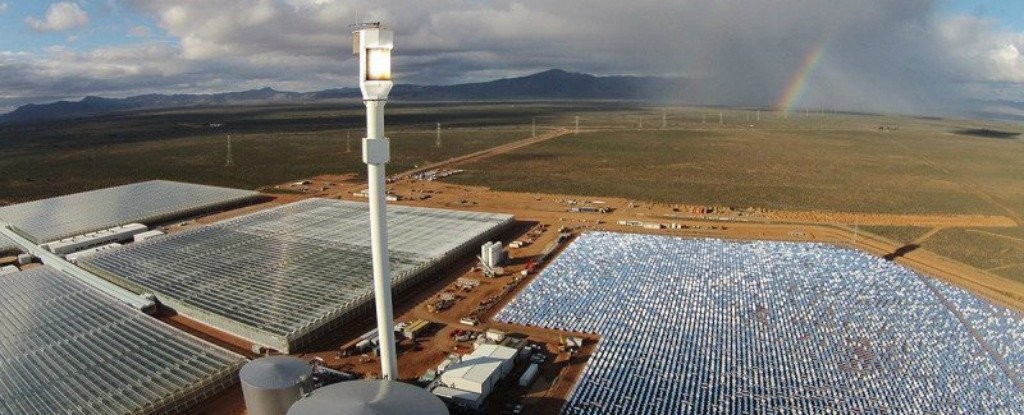Harvesting 17,000 tonnes of tomatoes every year, this solar powered farm is found deep in the desert and gets its water from the nearby Spencer Gulf in southern Australian. By focusing sunlight off of mirrors and onto a central pillar, they are able to boil and desalinate the water, creating fresh water for the plants and electricity left over to power the plant.
“A conventional greenhouse uses groundwater for irrigation, gas for heating, and electricity for cooling,” the team says on their site.
“A Sundrop greenhouse turns seawater and sunlight into energy and water. We then use sustainably sourced carbon dioxide and nutrients to maximise the growth of our crops.”
The farm houses about 180,000 tomato plants and can function completely off grid.
“We use the Sun’s energy to produce freshwater for irrigation. And we turn it into electricity to power our greenhouse to heat and cool our crops,” the team says. Also, being an indoor farm allows the group to bypass pesticides. “Our ventilation also uses seawater to clean and sterilise the air, so it keeps bugs under control without the need for pesticides,” they iterate.
Though it is currently connected to the central power grid as a backup, it doesn’t need to be. The system can be replicated (at a hefty price of $200 million) and can produce fresh water and electricity almost anywhere on the planet with lots of sunlight and saltwater.
“These closed production systems are very clever,” researcher Robert Park from the University of New England in Australia, who isn’t involved in the project, told New Scientist. “I believe that systems using renewable energy sources will become better and better and increase in the future, contributing even more of some of our foods.”
Even with the cost, the return is estimated to pay itself off rapidly.
Fresh water, food, and electricity – all in one place.
*Article originally appeared at Minds.












